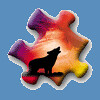ASP.Net Web Developer Guide |
||||||||
|
||||||||
Sitemap : Content in Chapter 1 |
Content in Chapter 2 |
Content in Chapter 3 |
||||||||
|
||||||||
Wednesday, March 01, 2006
ASP Server Control (Chapter3)
Introduction
ASP.NET supplies ASP.NET programmers with a much-needed solution to an age-old problem—HTML form controls. Up until .NET, ASP programmers had to move back and forth between HTML and ASP in order to provide interactivity between Web pages.This also meant that an ASP page was not as dynamic as it could be if it were done through Java or through some extensive JavaScript/Cascading Style Sheet (CSS) coding.
In short, ASP had the short end of the stick as far as Web interactivity went. With the advent of ASP server controls, all that will change. Imagine being able to do real-time value verification and having the Web page instantly spit out an error when someone tries to skip a required field. Imagine being able to dynamically replace data on a Web page without having to force the user to access another page or restart completely.With ASP.NET, all this and more is possible! The exercises illustrated in this chapter will demonstrate to you the power of ASP.NET.
Major Features of ASP.NET Server Controls
When you develop an ASP.NET Web Form, you can use the following type of controls:
ASP.NET supplies ASP.NET programmers with a much-needed solution to an age-old problem—HTML form controls. Up until .NET, ASP programmers had to move back and forth between HTML and ASP in order to provide interactivity between Web pages.This also meant that an ASP page was not as dynamic as it could be if it were done through Java or through some extensive JavaScript/Cascading Style Sheet (CSS) coding.
In short, ASP had the short end of the stick as far as Web interactivity went. With the advent of ASP server controls, all that will change. Imagine being able to do real-time value verification and having the Web page instantly spit out an error when someone tries to skip a required field. Imagine being able to dynamically replace data on a Web page without having to force the user to access another page or restart completely.With ASP.NET, all this and more is possible! The exercises illustrated in this chapter will demonstrate to you the power of ASP.NET.
Major Features of ASP.NET Server Controls
When you develop an ASP.NET Web Form, you can use the following type of controls:
- HTML Server Controls You can manipulate these controls at the server-side. Before dispatching a form to the client, the ASP Engine converts them to the equivalent HTML elements.These controls are included in the System.Web.UI.HtmlControls namespace.
- Web Server Controls (also known as Web Controls or ASP.NET Web Form Controls) These are the new generation’s controls developed by Microsoft.They have many useful built-in features, and a standard set of properties. In the HTML or .aspx file, these are typically referenced with an asp: prefix such as asp:Label, asp:Button, or asp:TextBox. Besides the form-type server controls such as labels, button, and dropdown, there are a number of special-purpose controls like the Calendar and AdRotator controls.The ASP Engine also maps these controls to standard HTML equivalent controls before dispatching the page to the client.These Web server controls are available in the System.Web.UI.WebControls namespace.
- Validation Controls This set of controls provides Rapid Application Development (RAD) features for automatically checking the specified validity of user inputs.These controls are available in the System.Web.UI .WebControls namespace.
- Custom Controls You can develop your own server controls by extending an existing control or group of controls to provide additional functionalities.There are two versions of custom controls:Web User Controls and Web Custom Controls.The Web User Controls are easy to develop, and are typically stored as .ascx files.The Web Custom Controls require in-depth knowledge of Object Oriented Programming and the Common Language Runtime (CLR).These are stored in compiled form as assemblies.
In this chapter we will provide an overview of these controls. Before we introduce you to the ASP.NET server controls, we need to focus your attention on a number of procedural issues involved in developing a Web form.These issues are the following: Collecting Data using HTML Forms, State-less ASP controls versus Statefull ASP Net controls, the role of PostBack, and In-Page Code versus Code-Behind.


0 Comments:
Post a Comment
<< Home